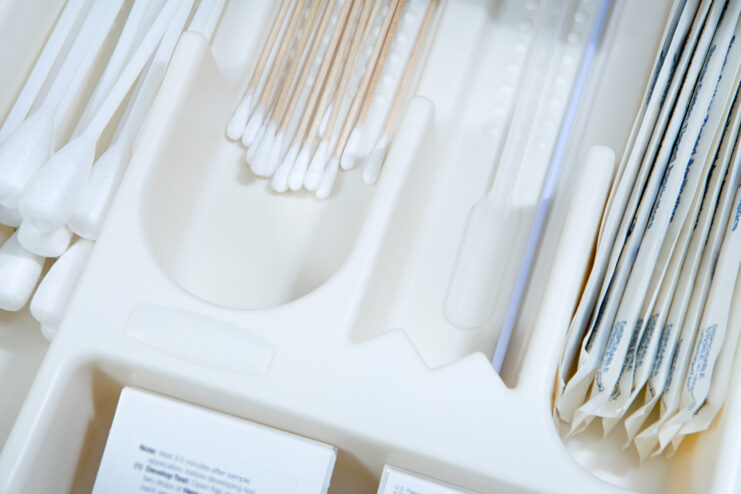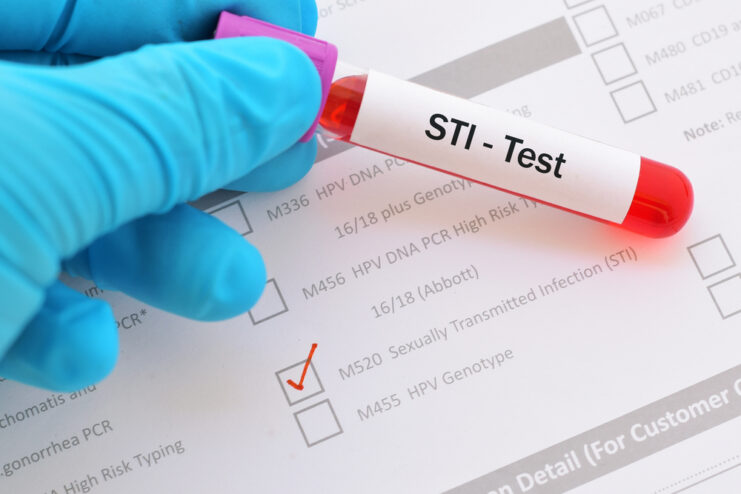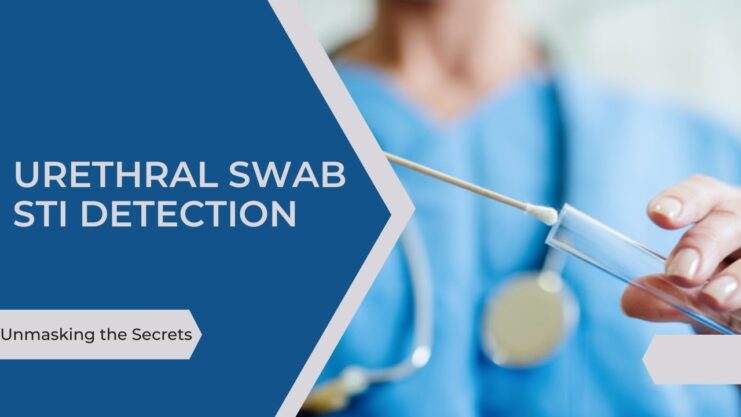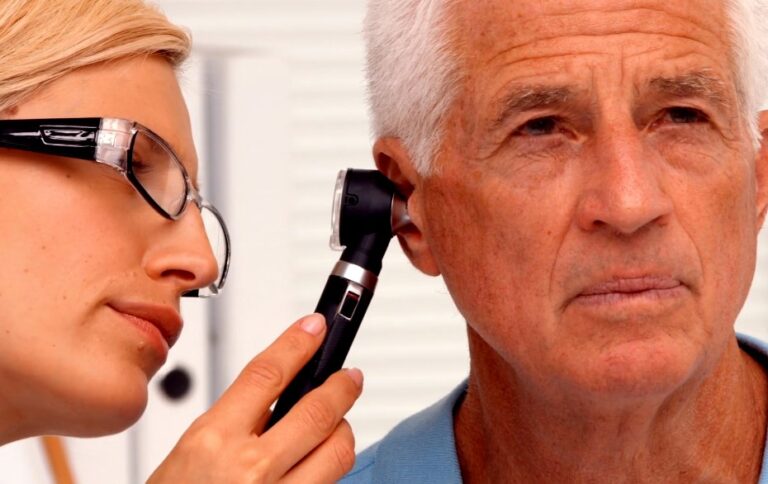Urethral swabbing is a diagnostic medical procedure predominantly utilized to detect sexually transmitted infections (STIs) such as gonorrhea, chlamydia, and other pathogenic microorganisms within the urogenital tract. The procedure involves the gentle insertion of a sterile swab into the urethra to collect a specimen for laboratory testing.
This medical tool serves as a key line of defense in the identification, treatment, and prevention of various STIs, offering valuable insights into an individual’s sexual health.
Despite the slight discomfort associated with the procedure, its importance in prompt diagnosis and therapeutic intervention is indisputable.
How Is a Urethral Swab Done?

- Source: opmed.doximity.com
Performing a urethral swab involves delicately inserting a slender cotton tip swab into the opening at the tip of the penis. With a gentle touch, the swab is carefully rotated and then swiftly withdrawn. This entire procedure typically takes only a few fleeting seconds. In certain medical centers, an alternative method employs a plastic loop instead of the cotton tip. However, the utilization of a plastic loop may lead to increased discomfort as it necessitates a deeper insertion.
Most patients describe the sensation of a urethral swab as “uncomfortable but not as distressing as anticipated.” While the experience may vary, it is important to note that your well-being is of utmost importance. I assure you that I will employ the gentlest approach possible to minimize any potential pain or discomfort during the swabbing process.
Following the procedure, you may be curious about when you can expect to receive the results. The timeline for obtaining the results can vary depending on the specific tests being conducted.
As a general guideline, you should anticipate receiving the results within approximately a week. During this waiting period, it is natural to experience a certain level of anticipation, but rest assured that the medical professionals involved will work diligently to provide you with accurate and timely information.
Is It Painful?
When it comes to the pain associated with a urethral swab, experiences can vary among individuals. While the majority of patients describe the sensation as uncomfortable rather than intensely painful, it is important to acknowledge that some people may find it painful. Each person has a unique threshold for pain, and factors such as anxiety or sensitivity in the genital area can influence individual experiences.
It is important to remember that while a urethral swab may cause some temporary discomfort, the benefits of prompt and accurate diagnosis of sexually transmitted infections far outweigh the brief unpleasantness of the procedure. Detecting and treating STIs promptly is crucial for your health and for preventing potential complications. By working together, we can ensure that the procedure is conducted with the utmost sensitivity and minimize any discomfort you may experience.
How Long Will It Take for Me to Know the Results of My Urethral Swab?

- Source: healthline.com
The importance of urethral swabbing in STI diagnosis and treatment cannot be overstated. Serves as a crucial tool in identifying and managing sexually transmitted infections, such as gonorrhea and chlamydia, within the urogenital tract. These infections can have serious health implications if left undiagnosed and untreated, including the potential for long-term complications and increased risk of transmission to others.
Provide healthcare professionals with direct access to the site of infection, allowing for the collection of specimens that can be analyzed in the laboratory.
The samples obtained through urethral swabbing help to identify the specific pathogens responsible for the infection, enabling tailored treatment plans. This targeted approach ensures that the most effective medications or therapies are prescribed, maximizing the chances of successful treatment and minimizing the development of drug resistance.
Importance in STI Diagnosis and Treatment

- Source: ukhsa.blog.gov.uk
Plays a crucial role in the diagnosis and treatment of sexually transmitted infections (STIs). Prompt and accurate identification of STIs such as gonorrhea and chlamydia is vital for initiating appropriate treatment, preventing complications, and reducing the spread of infections. Urethral swabs provide a direct sample of the urogenital tract, allowing healthcare professionals to detect the presence of pathogenic microorganisms.
This diagnostic tool enables tailored treatment plans, including the administration of specific antibiotics or antiviral medications, thereby enhancing patient outcomes and reducing the risk of long-term complications. Additionally, urethral swab results inform public health efforts, contributing to surveillance programs and targeted interventions to control the spread of STIs in communities.
Potential Complications
While it is generally considered a safe procedure, there are potential complications to be aware of. Some individuals may experience mild discomfort or pain during the swabbing process, particularly if a plastic loop is used instead of a cotton tip swab. In rare cases, the procedure may cause minor bleeding or irritation in the urethra. It is essential for healthcare professionals to employ proper techniques and use sterile instruments to minimize the risk of infection.
Additionally, individuals with certain conditions, such as urethral strictures or hypersensitivity, may be more prone to complications during urethral swabbing. Open communication between the patient and healthcare provider is crucial to address any concerns and ensure a safe and comfortable experience.
Minimizing Patient Discomfort

- Source: wexnermedical.osu.edu
Although discomfort during urethral swabbing is commonly reported as mild, healthcare professionals strive to minimize patient discomfort as much as possible. By using a gentle technique and employing a lubricated swab, healthcare providers can reduce any potential pain or discomfort associated with the procedure.
Prior to the swabbing, healthcare professionals should explain the process to the patient, addressing any concerns and providing reassurance. It is crucial for patients to communicate openly about their discomfort levels, allowing healthcare providers to adjust their technique accordingly. Furthermore, creating a comfortable and private environment during the procedure can help alleviate anxiety and enhance the overall patient experience.
FAQ
What should I expect during the procedure?
During the procedure, a healthcare professional will gently insert a thin cotton tip swab or a plastic loop into the opening at the tip of the penis. They will rotate the swab for a few seconds to collect a specimen from the urethra. The entire process is quick and usually lasts only a few seconds.
Will the healthcare professional use anesthesia during?
Local anesthesia is typically not necessary for a urethral swab since the procedure is brief and the discomfort is usually minimal. However, if you have specific concerns or a low pain tolerance, you can discuss the possibility of using a topical anesthetic with your healthcare provider.
Are there any risks of complications or side effects from a urethral swab?
While complications are rare, there can be minor risks associated with the procedure. These include temporary discomfort, slight bleeding, or mild irritation in the urethra. Infection is extremely rare since sterile instruments are used. If you experience persistent pain, heavy bleeding, or signs of infection after the procedure, it is important to contact your healthcare provider.
Can I urinate immediately after?
Yes, you can usually urinate immediately after the procedure. The swabbing process does not typically affect urination. However, if you experience any discomfort while urinating or notice any unusual symptoms, it is advisable to inform your healthcare provider.
How long does it take to receive the results?
The time it takes to obtain results may vary depending on the specific tests being conducted. In general, results are often available within approximately a week. However, some tests may provide quicker results, while others may require more time for comprehensive analysis. Your healthcare provider will inform you about the expected turnaround time for your specific test.
What should I do while waiting for the results?
While waiting for the results, it is important to refrain from sexual activity to avoid potential transmission of any undiagnosed infections. If you were experiencing symptoms prior to the swab, your healthcare provider may recommend abstaining from sexual activity until the results are received and appropriate treatment, if needed, has been initiated. It can also be helpful to educate yourself about safe sexual practices and STI prevention during this time.
Can a urethral swab detect all types of STIs?
Urethral swabs are primarily used to detect common STIs, such as gonorrhea and chlamydia. However, they may not detect all types of STIs. Some infections, like herpes or syphilis, may require additional tests or sampling from different sites for accurate diagnosis. Your healthcare provider will determine the most appropriate tests based on your symptoms and risk factors.
Final Words
In conclusion, urethral swabbing is a crucial diagnostic procedure used for the detection and treatment of sexually transmitted infections (STIs) within the urogenital tract. Despite the slight discomfort associated with the procedure, its importance in ensuring prompt diagnosis and initiating appropriate therapeutic interventions is undeniable.
Urethral swabs provide valuable insights into an individual’s sexual health, enabling healthcare professionals to tailor treatment plans, prevent complications, and contribute to public health efforts in controlling the spread of STIs.













